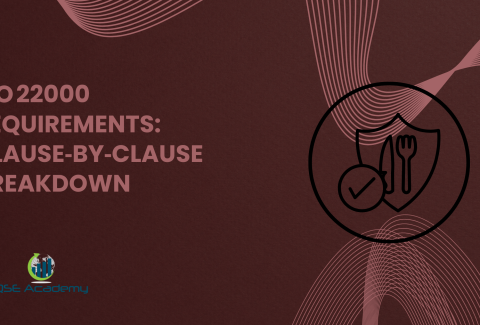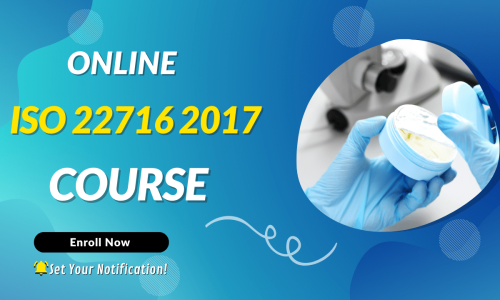What does HACCP stand for and why is it used?
Last Updated on December 23, 2025 by Hafsa J.
HACCP stands for Hazard Analysis and Critical Control Points
What does HACCP stand for and why is it used? ‘HACCP’ is an analysis of the raw materials, finished products, processing steps, and storage procedures for a food product. In addition to helping in the prevention of foodborne illness, HACCP can also be used as a quality management system for ensuring that quality standards are met in each product. Basically, ‘HACCP’ is a method to identify the potential hazards from production through to consumption and thus help prevent contamination.
Every step in the food production and processing process involves a risk of contamination. These processes include the harvesting of raw materials from the earth, receiving and storing of these raw materials at the processing plant, various steps involved in manufacturing, packaging, and distribution to market. For every food product, there are several possible points where contamination may occur. Due to this fact, numerous opportunities are present for quality control personnel to ensure that products are processed correctly and safely. Such points can be called critical control points (CCPs) as they are places where appropriate action (i.e., prevention methods) must be employed to reduce or eliminate potential or actual hazards.
There are 7 steps to conduct HACCP analysis.
Step 1: Describe the Raw Materials
This step involves obtaining and describing all the raw materials that are used in the production of a food product. The description is important because it helps flag any potential sources of contamination. This step also helps in tracking which materials were received in original form and what conditions were under which transportation or storage conditions prior to being used for the production of the food product.
Step 2: Describe the Manufacturing Processes
The manufacturing processes involve simple steps like washing, grinding, cutting, etc. They involve a greater number of steps, such as mixing, heating, cooling, and chilling. It also involves complex procedures such as blending, sterilization, mixing in bulk, and packaging. The purpose of this step is to identify any manufacturing processes that are vulnerable to contamination. This helps in developing a plan for appropriate control measures that can be implemented to prevent contamination.
Step 3: Describe the Packaging and Storage Procedures
The packaging phase involves packaging raw materials into finished products for distribution. In addition to this step, some foods are packaged in the form of meat and poultry products known as ready-to-eat (RTE) items. These products are also packaged in various packaging containers such as paper bags, cans, and jars. This step involves evaluating the packaging materials and the conditions under which they are stored before being used to package food products. Proper controls especially for food-contact surfaces (i.e., cans, jars, etc.) are very important for maintaining product quality and safety of consumers
.
Step 4: Describe the Services/Controls
The control phase involves choosing the appropriate equipment that is required to protect against contamination at CCPs. These include physical barriers and other means of preventing potential hazards from occurring or contaminating food products at CCPs. Some equipment includes plastic or stainless steel bins, vats, valves, and steam sterilizers. Of these, the most important are those that are used to control the heating and cooling processes.
For example, if a cooling process takes place in a large vessel used for chilling food products, then there is an increased likelihood of contamination due to the height of the vessel. Thus, it is necessary that these vessels have proper controls such as gasketed covers to prevent external contaminants from falling into the food products during the chilling process.
Step 5: Describe the Procedures to Control
This step involves developing a plan for conducting HACCP analyses and monitoring of CCPs. This is done by collecting information about the production of food products, reviewing the list of CCPs identified in previous steps, and establishing a point person responsible for carrying out this analysis process.
Step 6: Conduct HACCP Analyses at CCPs
The HACCP analysis is a systematic approach that identifies any hazardous conditions in raw materials at each step of food production and processing, identifies where they may be introduced during final processing, and establishes preventive action plans. These processes are then applied directly to each feedlot (i.e. CCP) in a larger system. These plans are then monitored continuously and any changes made as needed. This step provides the feedback that is utilized by a HACCP team to re-evaluate the status of steps during processing or to change the actions being taken or need to be taken.
Step 7: Conduct Analyses
Finally, this step involves conducting a HACCP analysis at each CCP. These analyses involve all steps in the process from raw materials through final product distribution. The result of this analysis is information about each point where contamination might occur.
Step 7: Establish Monitoring Procedures
Monitoring involves implementing corrective action plans to reduce or eliminate potential hazards to acceptable levels. This entails monitoring the CCPs and taking corrective action as necessary.
1. Raw Materials: The HACCP systems for raw materials identifies any potential sources of contamination that may be present in food production processes. These include environmental contamination and cross-contamination, processing equipment, human error, improper storage, and transport and storage conditions.
2. Processing: Food processing involves multiple steps which may result in hazards such as food spoilage or appearance deterioration. The HACCP systems for processing facilities identifies any potential hazards from contaminated equipment, improper temperature control or holding conditions, contact between raw materials and items during processing (i.e., mixing), and consumer handling (i.e. meat or poultry may contain bacteria).
3. Packaging: The HACCP systems for packaging evaluates the production, processing, handling, and storage conditions of packaging materials to prevent contamination of food products.
4. Storage and Transport: The storage and transport systems evaluate the potential hazards in food products that is due to temperature abuse (i.e., frozen foods), contamination by rodents or insects, improper handling during distribution (i.e., dropping), and improper transport conditions (i.e., lack of refrigeration).
5. Consumer Controls: The HACCP systems for co-packing evaluate the consumer controls such as temperature abuse, proper storage conditions, and appropriate use of food safety measures.
6. Maintain Records: A proper record of all the CCPs is necessary to conduct HACCP analyses. This is important for ensuring that all possible hazards have been identified, and thus that preventive actions are taken to reduce or eliminate potential hazards.
HACCP Plan
- Produce a written plan that outlines how the CCPs will be analyzed at each step of food production and processing methods
- Conduct HACCP analyses at the CCPs where the major contamination may occur in the raw materials and finish product
- Choose the appropriate corrective actions for implementing the preventive actions at the CCPs
- Take corrective action in response to critical conditions by altering or implementing new procedures to control the CCPs
- Analyze the occurrence of hazards (i.e. critical conditions) after all changes are implemented and then review and make any necessary changes if needed
- Conduct regular HACCP analyses at CCPs as needed (i.e., whenever there is a change)
- Monitor and record all identified hazards.
In conclusion, HACCP is a monitoring and analysis system that involves identifying the major CCPs present during each step in a food production process. It then establishes corrective action plans to reduce or eliminate potential hazards to acceptable levels. The system also monitors these corrective actions, as well as any changes that occur within the food production process.
The Hazard analysis and critical control points (HACCP) is part of ISO 22000, a comprehensive system for food, and was created in an effort to provide one approach that can be used by all food manufacturers. The HACCP approach is a very logical and simple method for identifying hazards, determining whether they are critical, and taking the necessary steps to control them.
Looking for More Resources on ISO 22000?
If you found this article helpful, explore our premium resources designed to help you achieve ISO 22000 certification efficiently:
- Complete Documentation Package for ISO/IEC 22000 2018: Get all the essential templates and documents you need for fast, easy implementation.
- Online Course on ISO/IEC 22000 2018 : Enroll in our comprehensive training to master the key concepts and practical steps toward certification.
- ISO/IEC 22000 2018 Checklist: Download our detailed checklist to ensure you’ve covered every step of the process.
These resources are tailored to meet your needs and ensure a smooth certification journey. Explore them today and get one step closer to success!


















